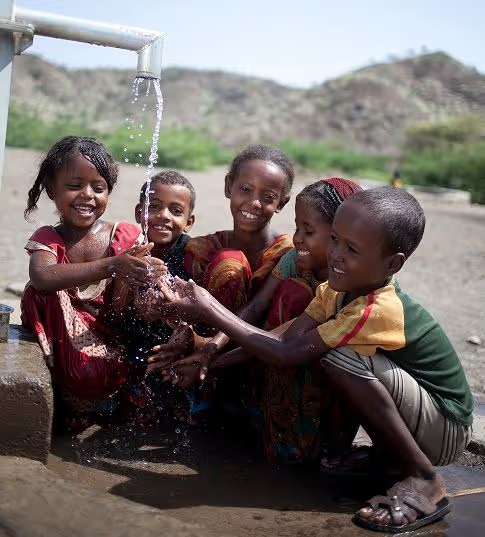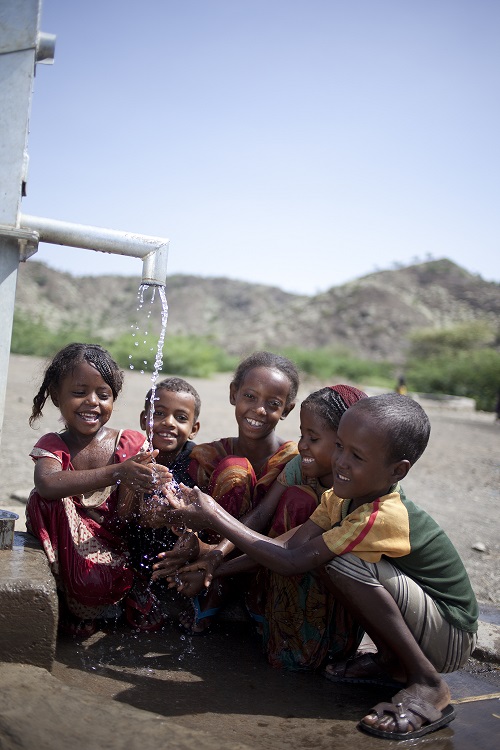Emergency WASH for Children

Project overview
This project aims to take a fresh look at the way we deliver water and sanitation facilities, and hygiene promotion, to children in disasters. Clean water and hygienic sanitation facilities are crucial in saving lives in the aftermath of a disaster; however, the facilities which are provided are often unsuitable or dangerous for children, because they are designed for adults.
Project solution
This project offers [specific solution or intervention] to tackle [challenge]. By implementing [strategies, tools, or innovations], the project aims to achieve [desired outcomes]. The approach is designed to [specific actions or methods] to bring about meaningful change in [community, region, or issue area].
Expected outcomes
This project aims to achieve [specific outcomes], such as [measurable results, improvements, or changes]. The expected impact includes [benefits to the target community, advancements in research or innovation, or long-term effects]. By the end of the project, we anticipate [specific changes or milestones] that will contribute to [broader goals or objectives].
Summary
This project aims to take a fresh look at the way we deliver water and sanitation facilities, and hygiene promotion, to children in disasters. Clean water and hygienic sanitation facilities are crucial in saving lives in the aftermath of a disaster; however, the facilities which are provided are often unsuitable or dangerous for children, because they are designed for adults. We think that there are solutions out there including imaginative ways to promote hygiene issues to children, both in schools and at home. This project will pull ideas together, and begin to test them in Save the Children projects in Ethiopia and Pakistan.
Challenge(s) addressed
With this grant from the Humanitarian Innovation Fund, we hope to answer some crucial questions which prevent children from using Water and Sanitation facilities. These include:
- How can we provide sanitation facilities for infants and babies? For example, when potties are distributed, these often make the situation less hygienic as there is nowhere to empty them.
- Water taps are often damaged when children use them, as children don’t know how to use them properly, and aren’t aware of the importance of not damaging them. How can we prevent this? We think that possible solutions include making the taps stronger and working with children to change their behaviour, but we will to use this grant to find out.
- How can we make sure toilets provided as part of our emergency responses are suitable and safe for children to use? We know that good ideas exist, but they are not collected together anywhere for emergency responders to use.
- An important part of an emergency water and sanitation response is spreading potentially lifesaving messages about hygiene – for example about hand washing and clean drinking water. We think that there are ways of making these messages more effective by coordinating them with similar messages about health and nutrition. This project aims to gather knowledge about the best ways of doing this.
Innovation Factor
Although water and sanitation in emergencies is a well-established area of emergency response, there is a crucial gap in the provision of useable, safe facilities to children. This pilot study aims to pull together existing knowledge about solving this problem, and improve emergency responders’ understanding of the unique needs of children, and the dangers which can occur if their needs are overlooked. It will begin to develop innovative solutions to the problems that children face during emergencies, and ultimately help to save more lives.
Added Value
This project aims to make best use of innovative solutions which may already exist, but aren’t developed or shared with the wider humanitarian community. We know that this is a crucial gap which stops lives being saved and that by addressing it the effectiveness of water and sanitation work in emergencies will be maximised.
Innovation Phases Description
Recognition – this project will raise awareness of this problem and begin to explore solutions, by means of a scoping study.
Key Deliverables / Impact
- Project inception workshop: to explain the background to the project and provide a chance to brainstorm ideas for exploration.
- Research: a thorough scoping study to draw together and summarise existing knowledge.
- Workshop of representatives from steering group organisations: to prioritise and review our research outputs. The steering group will also agree the scope of the trips to country programmes to gather solid data on which practices are most effective. This is currently planned to take place in Pakistan and Haiti, where staff and communities from Save the Children and from other organisations involved in recent disaster responses, will be interviewed.
- Discussion document: this will pull together the project’s findings and will be circulated to all members of the Global WASH cluster.
Project delivery & updates
Stay up to date with the latest developments from this project. Here, you will find details on what has been delivered, resources created, and regular updates as the project progresses. Access key documents, reports, and other materials to see how the project is making an impact.
